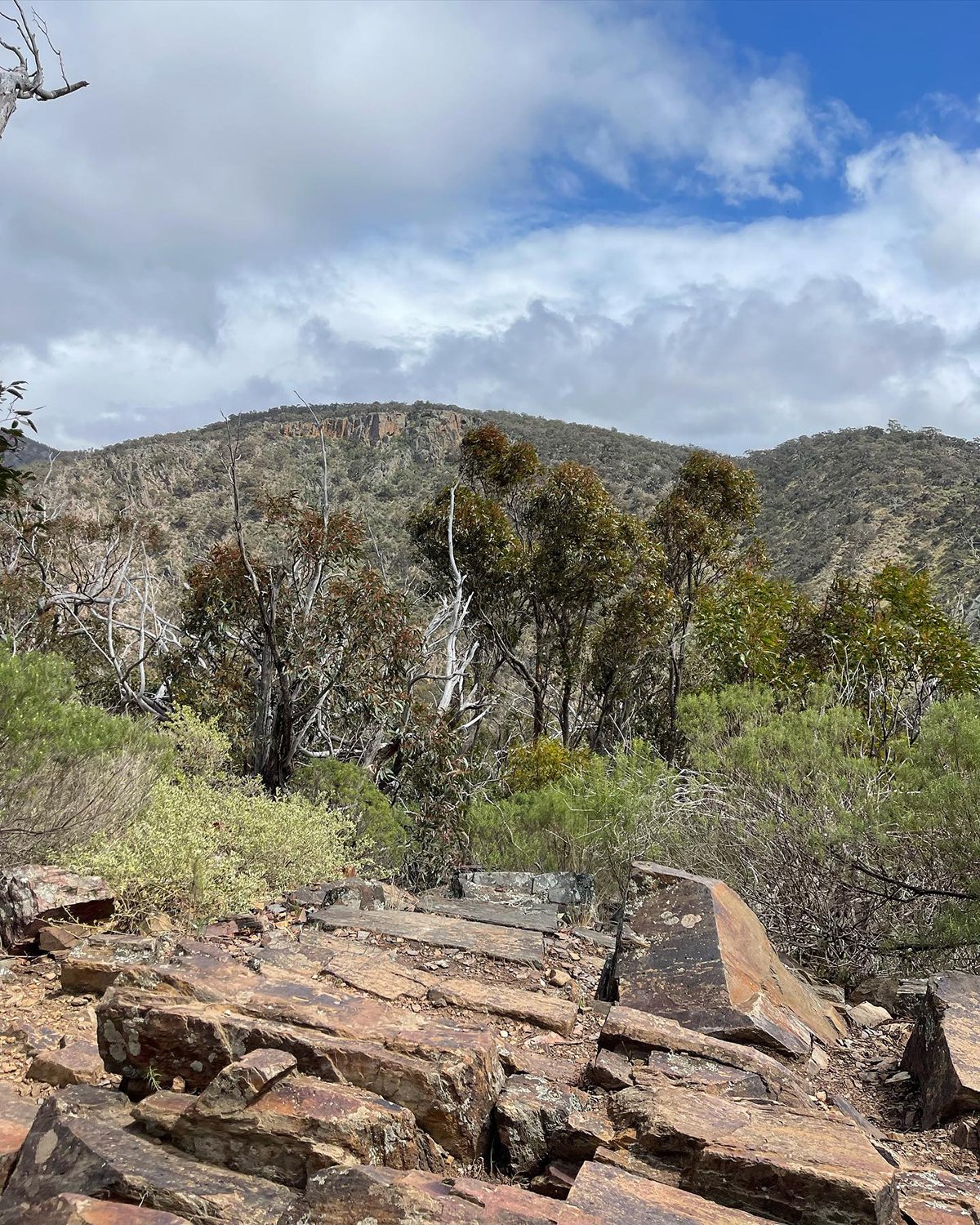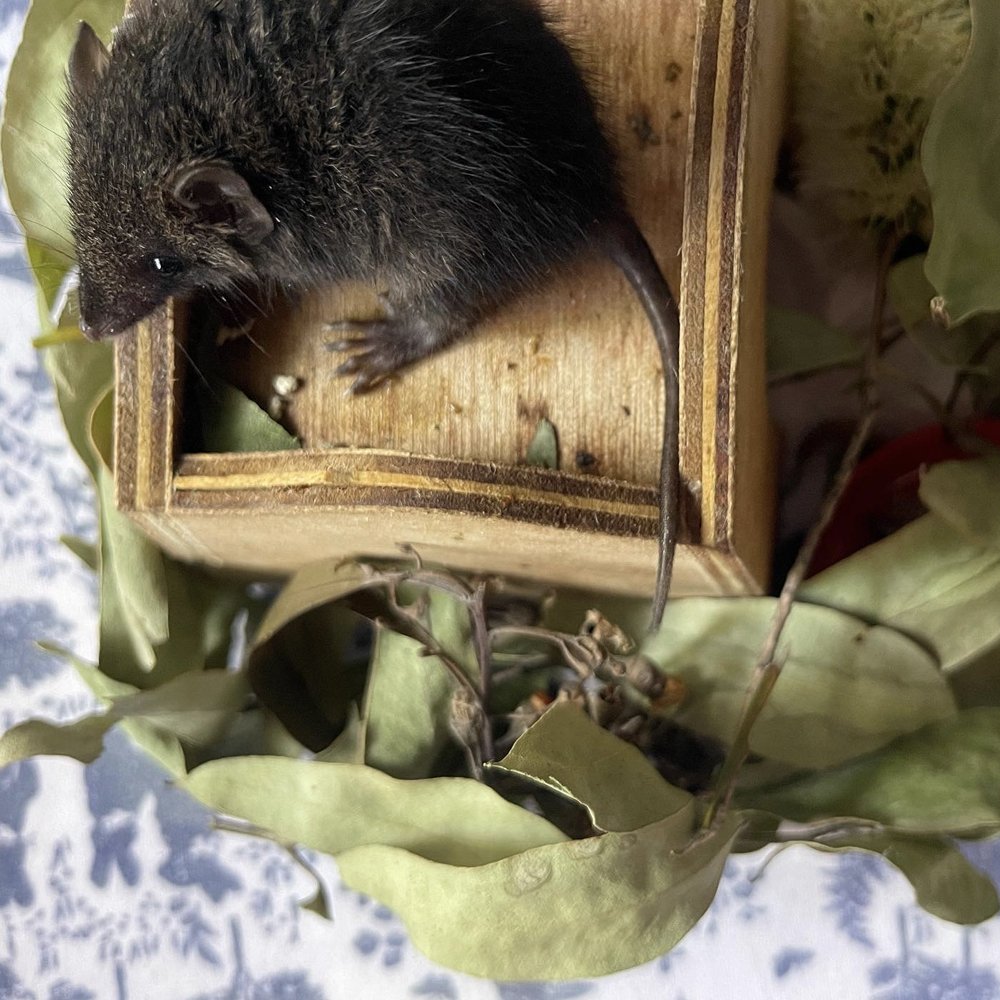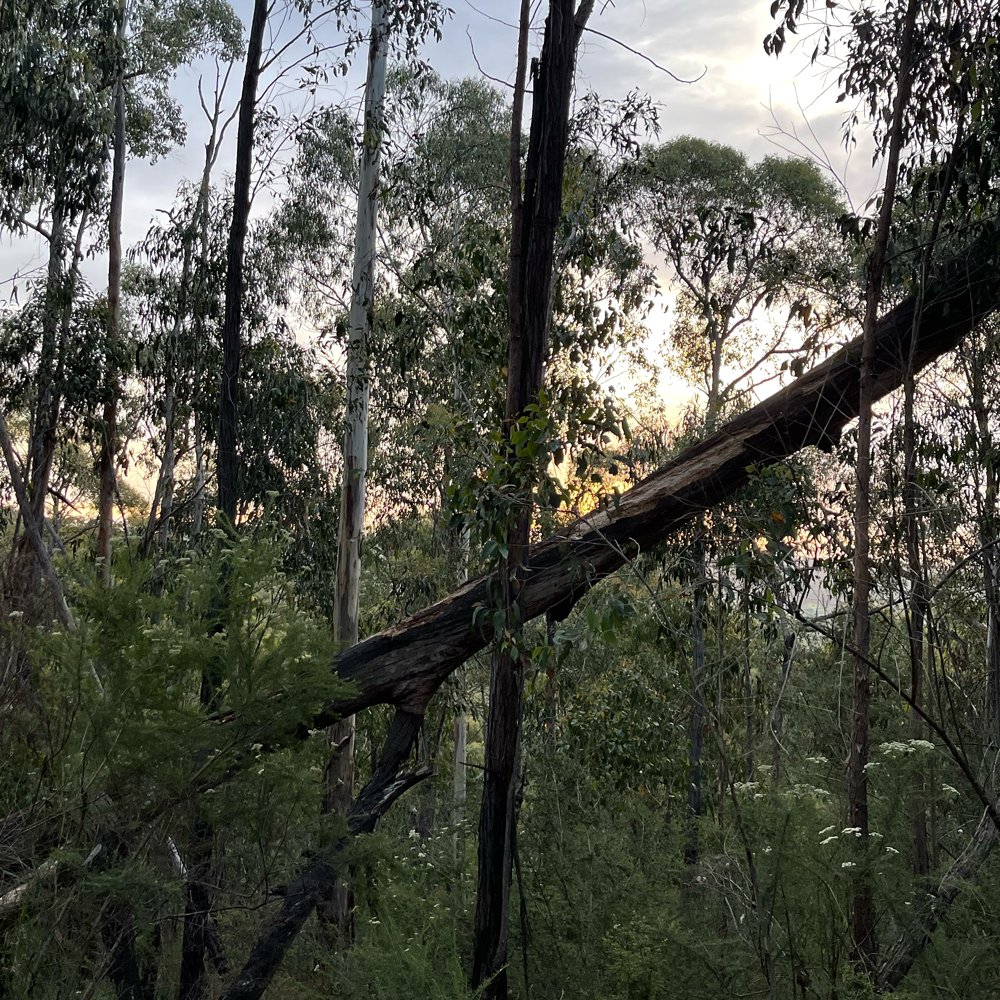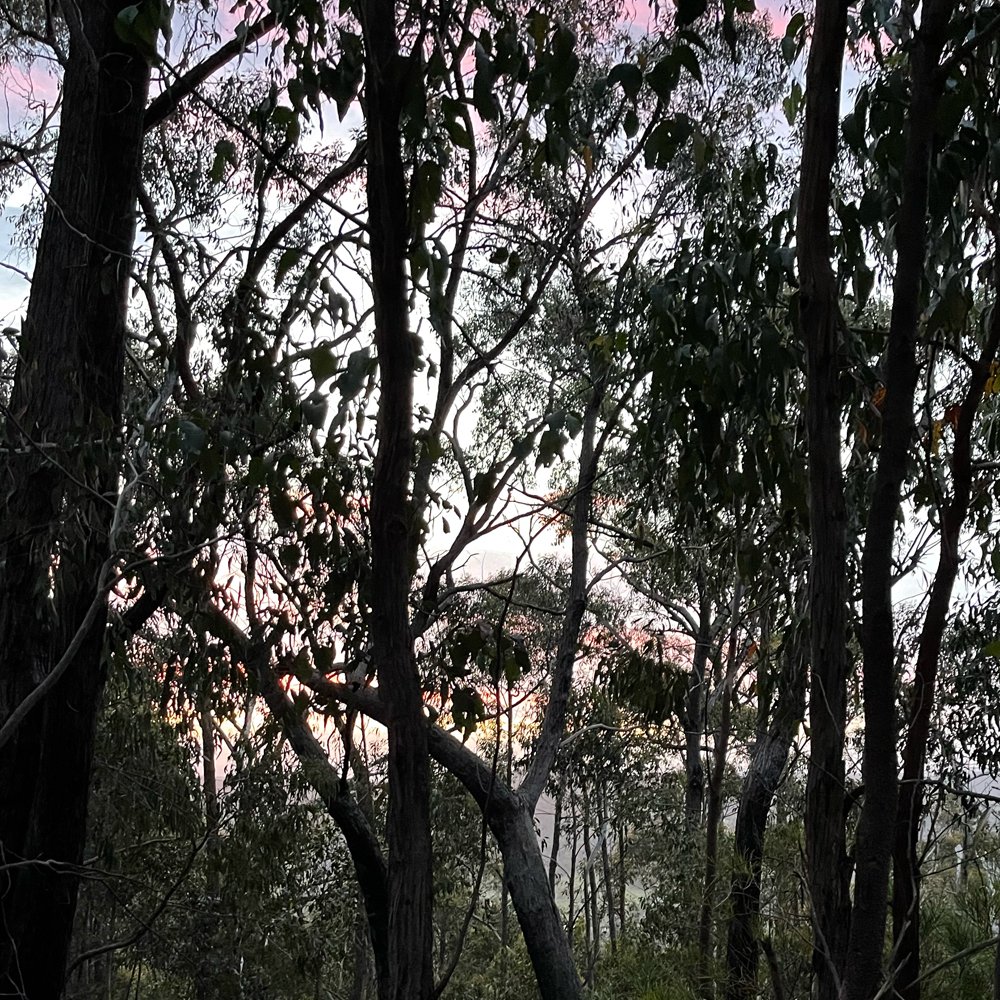Bingo!

Mainland Dusky Antechinus
We were the farthest from the car, when we received a call about an antechinus who we would name Bingo for the duration of their stay in car with us. We were on the Werribee Gorge Circuit Walk, enfolded in the beauty of the Red Stringybarks (Eucalyptus macrorhyncha), Black wattles (Acacia mearnsii), Scented groundsel (Senecio odoratus), Tree Violets (Hymenthera dentata), and River Bottlebrush (Callistemon sieberi (paludosis)).
Bingo is a juvenile, mainland Dusky antechinus. He might look, at first glance, like a native rodent, but he is not. He is, like all antechinus, actually a small, glorious, carnivorous marsupial that belongs to the dasyuridae family, which includes the dunnart, the quoll and the Tasmanian devil.
Unfortunately, yet fittingly, for a spell, in the process of graduating from being syringe fed his milk formula to lapping, he has run through his milk (mixed with The Good Oil), he looked somewhat like a teenager that had been experimenting with hair gel.
When he came into care, on the 25th of October, he weighed 9 grams. He also came with the proviso that once he was crunching cricket solids, he’d be ready for release in two to three weeks’ time. (A male famously has a life expectancy of 11 months and dies after an intense mating season).
When you held him in a small pouch in your hand, while cleaning his enclosure, he vibrated not unlike a laptop. He also made some very interesting sounds, and we delighted in learning so much from him as we looked after him.
So, just what exactly does a Bingo eat? Having previously looked after a Bush rat (remember Peanut?), we searched every resource we could think of and get our paws on.
From chapter 2, Dasyurids, of the DEECA ‘Victorian Wildlife Rehabilitation Guidelines, Part B: Mammals’:
Table 2.6 Feeding and diet guide for adult dasyurids during rehabilitation
Antechinus and dunnarts
• 10 g egg or cheese
• 2 mealworms
• ⅛ day-old chick (e.g. leg)
• 1 g fly pupae
• 2 crickets every 2nd day
• 2 earthworms every 2nd day
• 2 moths every 2nd day
• Native eucalypt flowers
• Dry dog food
And to ensure Bingo had a safe, quiet space by day, we made a custom version of our The remaking of things collage for him, from the offcuts. It wrapped around his wee home for the duration of his stay with us.
By the 13th of November, Bingo, this small carnivorous, frightfully clever marsupial, had more than doubled in weight (20g), and he was incredibly, increasingly fast.
He burrowed in the leaf litter, making channels, and the sound of his orchestrations delighted us. After we cleaned his enclosure and popped him back to investigate his new surrounds (and before putting the paper frame around the sides), we took a couple of videos and photos in order to ‘see’ him and chart his success. We observe that he can now catch and eat his solids.
Well done, speedy soul, fast and bright!
How to tell an antichinus from a rat (via Australian Museum):
* Their front teeth. Antechinuses have four rows of small sharp incisors. Rodents have one pair of distinctive chisel shaped incisors that have hard yellow enamel on the front surfaces.
* Their ears. Many antechinus species have large thin crinkly ears that have a notch in the margin, although not all will have this notch.
* Their tail. Antechinuses have a sparsely haired tail, which is the same length as the body or shorter (65–110mm).
Every inch of him alert, bristling with energy and inquisitiveness, on the 17th of November, after a feed of mealworms and crickets, we returned Bingo to the very site he was found. We released him at dusk, and can now happily report, Chum Creek Bingo is home!
After a brief spell acclimatising whilst in the enclosure, we popped his enclosure between two tree stumps, and opened the lid, to let Bingo head off in his own time. He hopped up onto the rim, and jumped out, and we wished him well on his journey. We hope he has a glorious wild life. We hope he feasts well, now that he can hunt live insects, and burns bright.
It was heartwarming to see him scamper off, and hear him rustling in the undergrowth. He loved to make channels in the leaf litter, and burrow under the pee-pad base in his little timber house, and now he can do so, for real, and bigger, and wilder.
Thank-you for trusting us with Bingo, Healesville Sanctuary. We loved learning from him.
‘Marsupials with suicidal sex habits: three new species found in Queensland’,
2017
Image credit: Female Antechinus swainsonii, Dusky Antechinus. Grampians National Park, Victoria, photographed by David Paul. Source: Museums Victoria.









































